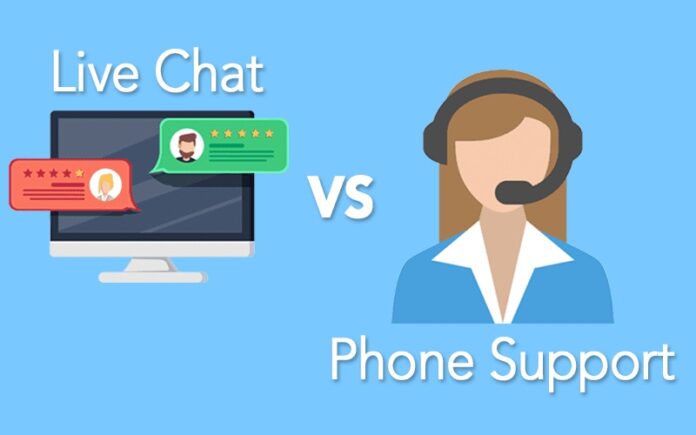At a certain point, your business will expand, and it can be challenging to identify the best opportunities for extending your team and infrastructure. Most of the time, growing pains indicate that you have too many duties and not enough people or procedures in place to keep everything going smoothly.
During a company’s rapid development, customer service is often the department that suffers the most, even though you know by now that exceptional customer service is essential to the success of any brand, regardless of its size.
Suppose you already have great customer service in place. You’re left wondering what the best steps are for enhancing your customer service experience when new budget possibilities present themselves.
Live Chat vs. Phone Support are the two most popular options for broadening your customer help channels, but how do you decide which one is more suitable for your needs?
Consider the following similarities and differences between the two business models so you can make the right decision for your company.
What To Expect With Live Chat Support
Instant messaging was the precursor to live chat in the early ’90s. It has transformed and evolved in many ways since then, but it still has a simple goal: give clients the ability to fix their issues without having to pick up the phone.
In the digital world of online chat, there are two types of assistance available (or a hybrid of both).
If you want real-time replies from a person, you can have a human handle the conversation.
Another option is an automated chat system. It allows users to pick from a list of commonly asked questions or enter their own response. The live chat does not provide any assistance beyond the pre-selected responses for use in the program.
It’s clear that humans have a distinct advantage over AI robots when it comes to dealing with more difficult circumstances and client issues.
However, there are certain drawbacks, such as the higher cost and the fact that one team member can only handle two to three customers at once.
AI systems are great for companies that get the same simple questions every day, such as “How long does the shipment take?” or “What is your price list?” In fact, 28% of consumers said that there’s nothing more frustrating than needing simple info that is hard to find. Automated help is similar to a live FAQ system, but with a higher level of personalization that offers your customers help at the point when and where they need it the most.
The best part about both options is that you don’t have to choose between them. It’s even better and recommended to employ both automated and human live chat systems at the same time, since automated chat can assist customers in finding basic information, while human live chat assistance can handle more complicated queries.
What To Expect With Phone Support
Although additional channels like live chat have emerged, phone assistance remains the most popular method of communication. Research shows that 76% of consumers want to have a phone number they can call if they have an issue. It comes as no surprise that many customers reach for their telephones first, considering how fast a call can resolve an impediment.
Phone support can offer much more than just answering calls. Hiring an answering service can help with making outbound sales calls, scheduling appointments, and sending reminder texts.
Not to forget one of the most invaluable benefits phone support has over any other type of assistance — forming more personal relationships and a deeper mutual understanding with your clients. Your team can quickly assess your customer’s level of contentment just by the tone of their voice, which gives you the opportunity to make a positive impact on them and form strong trust bonds with your brand. When your customers get to hear a friendly, human voice, they feel heard and understood. Is there anything better?
Now let’s talk numbers. While having these benefits is crucial, it might be expensive to hire one person to handle all of the incoming calls. Fortunately, there are several answering services that can provide a team of customer care representatives that are within most budgets.
While an in-house employee might cost up to $30,000 per year, the cost of using an outsourced contact center can be as little as one cent per minute. It’s a smart option; you pay them only for the amount of time they spend answering your calls.
How To Decide Which Is Best for You?
Only one in five customers are willing to overlook a poor customer service experience — so whichever channel you choose, make sure that you’re easy to reach out to and that you do everything you can to meet your customers’ needs.
Each service has its pros and cons. Ultimately, it comes down to the nature of your business and what your customers want. You should be available where they expect you to be, which usually means going omnichannel and covering as many platforms for communication as possible.
An answering service is an extension of your business and may take care of all of your phone inquiries. If you need even more assistance than phone support, you may engage an in-house professional to manage your live chat in combination with an answering service.
Even if you maybe don’t have the opportunity to expand in all directions, your customers can still feel heard and understood. Be upfront about everything and stay open to hearing them out. In the end, that’s all that matters.






























































